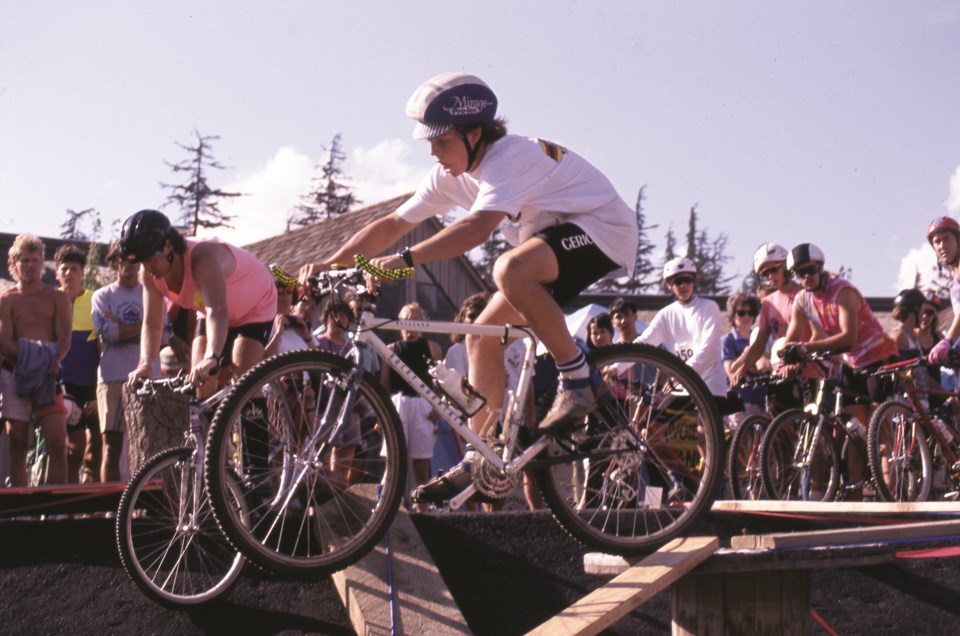From the 1960s to the 1980s, Whistler really was a one-season resort. Outside of the peak winter season, many businesses were shuttered because there were not enough people to turn a profit throughout the summer months. During the 1980s, investments went into golf courses, tennis courts and lakeside parks to increase summer visitation. Certainly 40 years ago, as Whistler Village was being constructed, nobody thought the turning point for Whistler becoming a four-season destination resort would come from running the lifts in the summer so people could ride down the mountain at astonishing speeds.
That started to change in the late 1980s. According to a letter to Village Information in the summer of 1987, Backroads Mountain Bike Adventures was in its third season of running commercial mountain bike tours in Whistler. The language clearly shows that the understanding of mountain biking was still limited for many people.
“A couple of hours on a bike tour will open your eyes to the sport of mountain biking and show you the hidden beauty of this four-season resort,” the letter reads. “Unlike conventional 12-speed road bikes, 15-speeed all-terrain mountain bikes have knobby tires, upright handle bars, and a strong, sturdy frame. This allows one to travel with power and finesse through forested trails and groomed gravel paths, typically found on Whistler’s backroads.” At this time, the daily rental rate for a mountain bike was $14.
Riding the hundreds of kilometres of incredible bike trails around Whistler today on my 1998 Rocky Mountain Spice, I can’t help but notice that mountain bike design has also changed. When my bike was released it dominated the trails. Now the tires that seemed wide at the time feel very small compared to those around me. When I was overeager a month ago and hit the Lost Lake trails in the snow, those with tires nearly twice the width of mine managed many of the uphill sections as I slid every direction but forward even on the flats.
Bikes have certainly changed over the years. While you could get custom-built mountain bikes earlier, in 1981 the Specialized Stumpjumper was one of the first mass-produced and mass-marketed mountain bikes. With no suspension and cantilever brakes, an early Stumpjumper can be seen in the Whistler Museum. Much of the progression of technology can be highlighted in this one bike. Still manufactured today, but with 40 additional years of competition and innovation, the current Stumpjumper comes with full suspension, disc brakes so you can stop when wet, and the tires are larger in width and diameter. The frame is popular in both carbon fibre and alloy. Similar progression can be seen in mountain bikes generally.
Today in Whistler we are spoiled for choice when shopping for mountain bikes, with many of the highest quality and most innovative bikes designed and constructed in our own backyard. This month, the Whistler Museum Speaker Series brings you conversations with Mike Truelove, the mastermind who constructed the OG bike for Chromag and has gone on to make thousands of frames. Join us on Friday, May 27 at 7 p.m. Tickets are available now for $10 or $5 for museum members.




